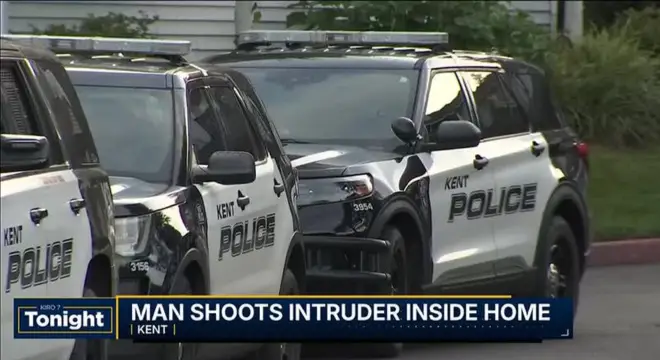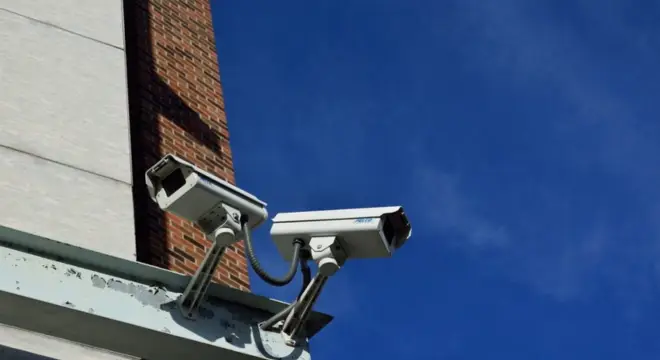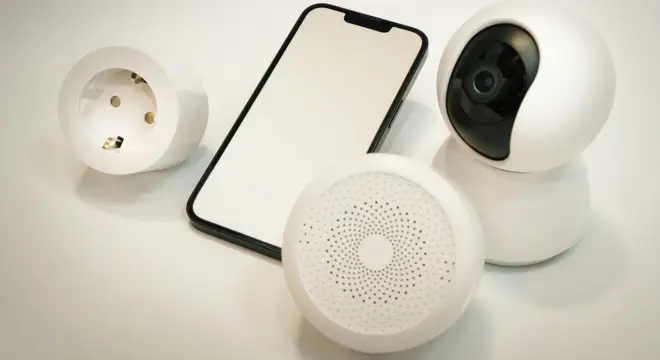Home Invasion Gone Wrong – Could Security Have Stopped the Shooting?
Imagine this: It is late night; you are resting peacefully in your house when you suddenly hear the unmistakable sounds of someone trying to break into your house. What will you do? Call for help? Hide and pray for their quick exit? Or will you fight back?
In Tucson, Arizona, a devilish scenario was developed in which a homeowner confronted the intruder who was forcibly trying to break into the house. While such a case stands for the right to self-defense, one must issue the legitimate question: If a modern security system had been in place, would the confrontation have been avoided?
Would the intruder have been stopped by a surveillance camera, a motion detector, or a smart lock before things really escalated? Or is a firearm for home protection still the best option? In this article, we will define whether security technology could have an effect on stopping such things and if that means the homeowner has to rely on a self-defense weapon as a last alternative.
2. Incident Overview
What Happened?
The owner of a home in Tucson, Arizona, found himself in the shocking situation of having to shoot an intruder who had tried to break into his property. The intruder, ignoring all warnings, forced his way into the house, giving the homeowner no other option than to use his gun in self-defense.
When & Where?
- Location: Tucson, Arizona
- Date & Time: (Exact date not specified, but it was reported recently in the news)
- Setting: A residential neighborhood where the homeowner was alone or with family at the time of the invasion.
Why Did It Happen?
- The motive for the break-in was not clear, but it was possibly just a plain case of robbery, home invasion, or mistaken identity.
- There might have been an attempt to steal valuables or to harm the occupants, therefore the homeowner was forced to take immediate action.
What Was the Outcome?
- The intruder was shot and, depending on what the official reports say, he was either injured or killed.
- The homeowner was in safety, having prevented any injury to himself or his family with a rapid response.
- Police soon arrived at the scene and began investigating if the shooting was justified under the self-defense laws of Arizona.
This case has sparked a larger debate—could a security system have prevented this violent confrontation?

3. Could Security Systems Have Prevented This?
In cases like the Tucson home invasion, security technology could have played a significant role in either preventing the incident or reducing the chances of a violent confrontation. Let’s examine how different security systems might have helped.
1. CCTV Cameras: Early Detection & Awareness
- Had the homeowner deployed security cameras, the intruder could have been spotted somewhat earlier, perhaps even before an attempt to enter the premises.
- A real-time alert through any surveillance system would have enabled the homeowner to contact the police before resorting to using a firearm.
- Some smart security cameras incorporate two-way audio, which would permit homeowners to ward off intruders prior to entrance, thus inadvertently scaring them off.
2. Motion Sensors & Alarms: A Warning Before the Break-In
- Motion-sensor lights and alarms might have scared off the intruder, even causing him to rethink his actions.
- If anything, the neighbor might have been alerted to a loud security alarm or an automatic notification could have been sent to the police, thus reducing response time.
- Research indicates that most burglars run away at the sound of a loud siren, so it is possible this would have prevented any opportunity for a break-in.
3. Smart Locks & Access Control: Stopping Intruders at the Door
- If the home would have had smart locks rather than traditional locks, it would have had far more difficulty in being broken into.
- Biometric locks, keypad systems, and remote-controlled locking systems secure doors and protect entry without requiring a key.
- Some smart locks will automatically lock within seconds and alert homeowners when one suspect attempt is detected.
4. Police Alert Systems: Faster Emergency Response
- Some modern security systems are tied directly to central monitoring stations, which are on the lookout 24/7 and can call the police immediately if there is a break-in assessed.
- Panic buttons or silent alarms should have been activated to facilitate law enforcement responses long before the situation became tragically severe.
- Geofencing security systems always watch for unauthorized movement around the property and send alerts long before a break-in.
4. Legal & Ethical Discussion
The Tucson home invasion raises critical questions about self-defense, legal justification, and the ethics of using deadly force. While the homeowner acted in self-defense, could security measures have been a better alternative? Let’s break it down.
1. Self-Defense Laws: Was the Homeowner Legally Justified?
- In the U.S., self-defense laws vary by state. Arizona follows the “Stand Your Ground” and “Castle Doctrine” laws, which allow homeowners to use force—including deadly force—if they reasonably believe they are in immediate danger.
- Since the intruder forcefully tried to break in, the homeowner likely acted within his legal rights.
- However, was deadly force the only option? If the homeowner had security cameras, alarms, or a way to delay the intruder until police arrived, could the shooting have been avoided?
2. Moral Debate: Was Taking a Life the Only Choice?
- Moral Dilemma: Is the act of killing acceptable in self-defense, or does the compassionate human being always make efforts towards a non-lethal resolution?
- While the homeowner had the right to self-defense, would a security system not have been able to provide a non-lethal means to prevent this situation?
- While some maintain that violence is always the last option, others say that a homeowner need not hesitate to protect his home and family.
3. Guns vs. Security Systems: What’s the Better Investment?
| Factor | Firearms for Self-Defense | Security Systems |
| Effectiveness | Instant response in dangerous situations | Prevents incidents before they escalate |
| Legal Issues | Risk of legal consequences if misused | Legally safe, no direct confrontation |
| Safety | Requires training; can be dangerous if misused | Safer, non-violent deterrent |
| Cost | Firearms are a one-time purchase but may need permits | Security systems require installation and maintenance |
| Peace of Mind | Provides protection but can lead to fatal outcomes | Reduces risk without direct violence |
5. Real-Life Examples & Statistics
Tucson homes, obviously, have not been the very first in these situations but a very long history of incidents when homeowners have shot intruders to defend themselves. But how many times can you actually say that a security system prevented something? Let us look at some real-life instances and statistics.
1. Similar Cases: When Homeowners Used Firearms Against Intruders
(i). Dearborn Heights, Michigan (2023):
A homeowner, understanding what a horror it would be and a clear siege, came with a gun protective of the bed shroud and apparently blew away the pair, indicative of murder as robbers broke into the house at night.
(ii). Manatee County, Florida (2024):
A man had an intruder come into his home in the middle of the night and shot him fatally, leading to his death in the hospital. He was not charged.
(iii). Houston, Texas (2022):
A 65-year-old homeowner fires a gunshot at an armed robber as a means of self-defense. Consequently, the suspect died from the gunshot wound.
While these cases highlight the importance of self-defense, could they have been prevented with better security systems?
2. Security System Adoption Rate: How Many People Invest in Home Security?
- In the statista report for 2023, 39% of U.S. households were reported to have a home security system (alarms, cameras, or smart locks) in their houses.
- The global home security market is projected to reach USD 84 billion by 2028 from USD 62 billion in 2023, showing thus the ever-increasing demand.
- Based on a 2022 survey conducted by SafeWise, 60% of burglars avoid homes with visible security cameras or alarm signs.
3. Crime & Burglary Data: Does Security Reduce Home Invasions?
- FBI Crime Report (2023): Homes without security systems are 300% more likely to be broken into.
- UNC Charlotte Study: 83% of convicted burglars admitted that they check for security cameras before attempting a break-in.
- National Crime Prevention Council: Over 50% of burglars flee when they hear an
Conclusion
Home protection relies heavily on both the guns and security systems put in place. Guns serve as immediate defense while security systems keep assailants from breaking in. The best protection will be both—involving CCTV cameras, alarms, and smart locks for prevention, and the use of firearms for self-defense as a last resort.
Homeowners deserve to own a security technology investment, an emergency plan, and responsible firearms ownership to keep them safe.
So, what is best to protect your home with-a gun for self-defense, or a smart security system for prevention?


